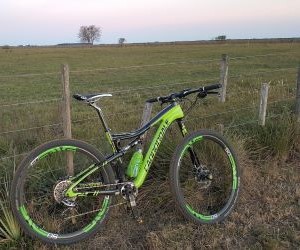Learn how to deal with punctures on long rides with prevention tips, repair techniques, and smart gear choices to keep rolling without stress.
HOW DO I AVOID DIGESTIVE PROBLEMS DURING LONG RIDES?
Digestive problems can ruin endurance rides, causing cramps, bloating, or worse. This comprehensive guide explores why gastrointestinal distress happens and how to prevent it. You’ll discover nutrition strategies, hydration planning, and pre-ride routines that optimize performance while protecting your gut. Whether you cycle, run, or tackle triathlons, these evidence-based tips will help you enjoy every mile without stomach setbacks.

Understanding digestive distress on long rides
Digestive problems are common among endurance athletes. Long rides place unique stress on the gastrointestinal (GI) system because blood is diverted to working muscles, leaving digestion compromised. Combine that with jostling motion, high-carb fueling, and dehydration, and the gut becomes vulnerable to cramps, bloating, diarrhea, or nausea.
Why it happens
Several factors contribute to digestive discomfort during endurance rides. Reduced blood flow to the stomach slows digestion, making food sit longer and ferment. Intense effort raises stress hormones like cortisol, which further affect gut motility. Add in concentrated sports drinks or gels, and the system can quickly get overwhelmed.
Dehydration thickens stomach contents, delaying emptying.
High fructose intake often triggers bloating and diarrhea.
Fiber or fat-rich foods are harder to digest mid-ride.
Aerodynamic riding positions compress the abdomen, worsening discomfort.
Common symptoms to watch for
Recognizing early warning signs is crucial to prevent a small issue from escalating. Symptoms include side stitches, stomach sloshing, urgent bathroom stops, or prolonged bloating. These red flags suggest your fueling or hydration plan needs immediate adjustment.
By identifying triggers and patterns, riders can adapt their approach before symptoms derail performance. This means adjusting diet, timing, and hydration strategies long before race day.
Nutrition strategies for gut-friendly rides
The foundation of avoiding digestive problems lies in smart nutrition choices. Both pre-ride meals and on-the-bike fueling should support energy without overloading the gut. The golden rule: train your stomach just like your muscles.
Pre-ride meals
A balanced pre-ride meal should be low in fat, moderate in protein, and rich in easily digestible carbohydrates. Timing matters—eating 2–3 hours before the ride gives the body time to process food. High-fiber foods like beans or raw vegetables should be avoided close to start time to reduce risk of bloating or gas.
Opt for white rice, oatmeal, or bananas as carb sources.
Keep protein light with eggs, yogurt, or lean poultry.
Limit greasy foods, sauces, or fried items.
Hydrate with water or electrolyte-rich drinks, not soda.
Fueling during the ride
On long rides, consistent energy intake is key. Aim for 30–60 grams of carbs per hour, depending on intensity and body size. The type of carbohydrate matters: glucose and maltodextrin are absorbed faster and more comfortably than pure fructose.
Variety also helps. Mixing solid snacks with gels or chews reduces flavor fatigue and digestive strain. However, riders should always test new fueling strategies in training, never on race day.
Hydration balance
Hydration directly impacts digestion. Drinking too little leads to thickened stomach contents, while drinking too much can cause sloshing and nausea. The sweet spot is 400–800 ml of fluids per hour, adjusted for heat and sweat rate. Electrolytes, especially sodium, are essential to aid absorption and prevent hyponatremia.
Sip fluids steadily instead of chugging.
Pair water with electrolyte tablets or mixes.
Avoid highly carbonated beverages mid-ride.
Weigh yourself pre- and post-ride to gauge sweat loss.
Training the gut
Digestive resilience can be built over time. Athletes who practice fueling during training adapt their GI tract to handle higher carb intakes. This “gut training” reduces race-day surprises and maximizes endurance performance. Like interval training, it requires consistency and patience.
Recovery and long-term prevention
Even with perfect planning, digestive issues may still occur occasionally. Recovery strategies and long-term habits help minimize recurrence and protect overall gut health.
Post-ride recovery meals
After a long ride, the digestive system is sensitive. Recovery meals should emphasize easily digestible carbohydrates and lean protein while avoiding heavy fats or excessive fiber. Smoothies with banana, whey protein, and almond milk are excellent options. This approach replenishes glycogen without overwhelming the gut.
Choose rice, pasta, or potatoes over heavy grains.
Add fermented foods like yogurt or kefir for probiotics.
Prioritize hydration with electrolyte replacement.
Avoid alcohol immediately after intense rides.
Lifestyle adjustments
Digestive health depends on long-term consistency. Sleep, stress management, and daily diet all influence gut resilience. Incorporating probiotic-rich foods, limiting processed sugars, and maintaining hydration throughout the week reduces the chance of GI distress during rides.
Stress reduction practices like yoga or meditation also help regulate gut motility. By lowering cortisol levels, they indirectly enhance digestion under physical stress.
When to seek professional help
Chronic digestive problems may signal underlying conditions such as irritable bowel syndrome, lactose intolerance, or celiac disease. In such cases, consultation with a sports dietitian or gastroenterologist is critical. Tailored strategies ensure both performance and health are protected.
Building a sustainable routine
The best prevention plan is one that can be maintained long term. Riders who consistently practice smart fueling, hydration, and recovery build not just stronger muscles, but a resilient gut. This sustainable approach reduces anxiety around food choices and allows focus on the ride itself.
YOU MAY ALSO BE INTERESTED






